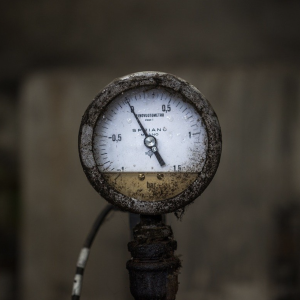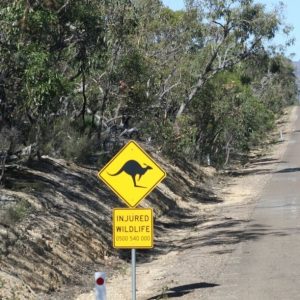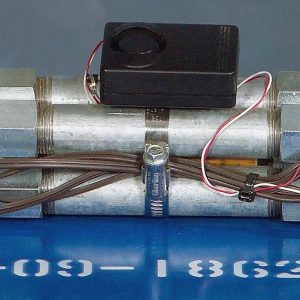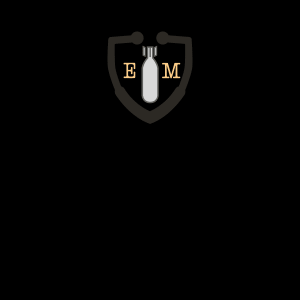Want to experience the greatest in board studying? Check out our interactive question bank podcast- the FIRST of its kind here: emrapidbombs.supercast.com
Author: Blake Briggs, MD
Peer Reviewer: Larry Mellick, MD
Introduction (1-5)
Perhaps the most dramatic of genitourinary complaints in males, testicular torsion presents with usually sudden onset of unilateral testicular pain. Overall, torsion makes up 30% of all acute scrotal pain presentations and is a surgical emergency. Torsion can occur in males at any age, but is most commonly seen in puberty (65% of total cases) and less so in the neonatal period. Neonatal torsion makes up 10% of all pediatric cases. Total incidence in males <25 years old is 1 in 4000. The high incidence in puberty is thought to be secondary to increased testicular weight during pubertal development, but who really knows. One would think this is a slam-dunk diagnosis to make, but in reality up to 30% of failed testicular salvage cases can be attributed to misdiagnosis. This document will review the pathophysiology, presentation, diagnosis, and management of testicular torsion. We owe a big thanks to Dr. Larry Mellick, Vice Chair and Professor of Emergency Medicine at University of South Alabama. He’s also the Division Chief of Pediatric Emergency Medicine. He is a leading expert in this area, and graciously helped us out, so check out our references for more of his research.
Pathophysiology (6-7)
The testis is normally fixed to the tunica vaginalis through a fibrous band called the gubernaculum testis. The most common abnormality associated with torsion is the testis lacking this important attachment to the tunica vaginalis, called a “bell clapper” deformity. When this defect is present, the testis is “suspended” in the scrotum by the spermatic cord which contains 3 major vessels: the pampiniform plexus venous system, testicular artery, some lymphatic vessels, and the vas deferens. The “bell clapper” deformity allows for increased testicular mobility, predisposing the patient to torsion should the testis twist on its spermatic cord, causing venous compression with subsequent swelling of the testicle as well as arterial occlusion.
The bell clapper deformity can be bilateral. If present, the testis will often have a horizontal lie in the scrotum.
Presentation (3, 6, 8-9,18)
Sudden onset of scrotal pain, most commonly <12 hours duration. Sneakily, lower abdominal pain might be the only complaint (as many as 20% of patients), serving as a critical reminder to perform a detailed GU exam on any male with lower abdominal pain.
Accelerate your learning with our EM Question Bank Podcast
- Rapid learning
- Interactive questions and answers
- new episodes every week
- Become a valuable supporter
90% have nausea and vomiting.
Pain is usually constant but might be intermittent if the testicle is torsing and detorsing, this not only makes it more difficult for clinicians to pick up on, but also spells for worse clinical outcomes.
A classic presentation is males awakening from sleep with acute scrotal pain.
On exam, the scrotum is usually tender to palpate, may be edematous, and possibly indurated. The testis might feel it has a horizontal lie if a bell clapper deformity is present. Depending on body habitus, the affected testis feels shortened (“high-riding”) due to twisting of the spermatic cord. The key here is that the testis may “appear normal” until its palpated and there are noticeable differences compared to the unaffected side. However, none of these findings are reliable, nor should their absence alter the diagnostic workup of those suspected of having testicular torsion.
The cremasteric reflex has been taught as a reliable physical exam sign for testicular torsion. Sadly, more and more evidence shows this is not the case. It is a superficial muscle reflex in males that is elicited with stroking of the inner thigh. The palpation of that region causes the cremaster muscle to contract, pulling the ipsilateral testicle toward the inguinal canal. The cremasteric reflex might be absent in males without torsion, especially in those <6 months old. It is also difficult to perceive on exam and can be quite subtle.
A lot of small studies quote different sensitivity/specificity numbers, and these numbers vary by the age of the patient.
In general, do not exclude torsion as a diagnosis based on any physical exam findings- there is no single physical exam finding that can safely exclude torsion.
Intermittent torsion is an uncommon occurrence, but its true incidence is unknown. It is characterized by acute and intermittent sharp, sudden onset of pain, followed by long asymptomatic intervals.
As you can imagine, neonates are an especially difficult group to examine. Acute tenderness, swelling, and overlying scrotal changes are often evident. The key here is a change from a prior testicular exam, so parental input is essential.
Diagnosis (1,8,10,11,17-19)
The diagnosis may be made clinically at bedside if there are definitive findings: acute, sudden onset of testicular pain, absent cremasteric reflex, testicular tenderness with swelling, high-riding or horizontal lie position.
A surgeon or pediatric urologist should be consulted immediately. Do not wait for the ultrasound to be done.
In a retrospective study of 338 children with acute scrotal pain, the following clinical score was made:
Nausea or vomiting (1 point)
Testicular swelling (2 points)
Hard testis on palpation (2 point)
High-riding testis (1 point)
Absent cremasteric reflex (1 point)
A score >5 had a sensitivity of 79% for torsion, specificity 100%, and PPV of 100%. A score <2 ruled out torsion with a sensitivity of 100%, specificity of 82%, and NPV 100%.
In those where the symptoms may not be obvious, a color flow Doppler ultrasound should be performed emergently. Most importantly, the US will show twisting of the spermatic cord. Less commonly, decreased testicular perfusion is seen. False negative scans can occur with those having intermittent torsion. Overall, US sensitivity ranges 69-100%, and specificity 77-100%. Ouch, we thought it would be better. The US is even further limited in prepubescent testes due to lower blood flow at baseline. The most likely reason is related to the thickness of the spermatic cord, degrees of twisting, and the persistence of blood flow to the testicle as a result of variations in anatomy.
When the US is nondiagnostic but the presentation remains concerning, call urology anyway!
It cannot be emphasized enough that if there is concern for torsion, there should be no hesitation to call the urologist or surgeon- beforethe ultrasound. If detorsion occurs within 6 hours, there is 97-100% viability, after 12-24 hours there is 40-60% viability. Salvage is <20% beyond 24 hours, so there certainly have been cases of survivability beyond 48 hours. Neonatal torsion has abysmal salvage rates at 30-40%, likely related to the inability to perform a history and reliable physical of the patient, with much of it dependent on parental observation.
Bottom line: no matter the symptom onset, even if >48 hours, urgent workup is required. You do not know if this patient will have salvageability, or if he was having intermittent torsion.
The gold standard for diagnosis is surgical exploration, much like ovarian torsion. Definitive treatment is orchiopexy of both testes if the torsed testicle remains viable. Orchiectomy is performed if the affected testicle is nonviable.
Manual detorsion (12-14)
If torsion is suspected and you are waiting for the specialist to arrive, you should attempt manual detorsion in the ED. Manual detorsion is safe to attempt and might increase the probability of tissue salvage (one study showed 97% compared to 75% where manual detorsion was not attempted).
Here’s how you do it:
1. Administer pain medications first.
2. Over 66% of cases of torsion occur when the testis rotates medially. So, obviously we want to rotate the testicle in the opposite direction. Grasp the testicle with one hand perform external rotation (rotate towards the thigh; i.e. medial to lateral). You should do at least two, full 360 degree turns, or until pain is relieved. This is also called “opening the book”.
3. If there is no relief of pain, attempt to turn in the opposite direction, as about 1/3 of cases involve torsion due to lateral rotation.
4. The procedure is successful if the testis returns to normal lie and/or the resolution of pain.
Torsion of the appendix testis (15-16)
This is a different story. The appendix testis is a small vestigial structure on the superior aspect of the testis. It is prone to torsion due to its pedunculated shape, and its associated pain can be severe. It is most common in prepubescent males.
However, the exam is quite different: nontender testis, palpable mass at the superior pole, and rarely the “blue dot sign” where the appendix is gangrenous and black appearing through the scrotum. A normal cremasteric reflex will be present. Doppler flow on US is normal and will show increased testicular blood flow, enlarged epididymis, and hyperechogenic mass between the epididymal head and upper pole of the testis.
Management is supportive, the exact opposite of testicular torsion. Pain resolves in 5-10 days. Elevation of the scrotum and pain control are core management strategies. No antibiotics are needed- this is not epididymitis.
References
1. Edelsberg JS, Surh YS. The acute scrotum. Emerg Med Clin North Am 1988; 6:521.
2. Rohn RD. Male genitalia: Examination and findings. In: Comprehensive Adolescent Health Care,, Friedman SB, Fisher M, Schonberg SK, et al (Eds), Mosby-Year Book, St. Louis 1998. p.1078.
3. Anderson MM, Neinstein LS. Scrotal disorders. In: Adolescent Health Care: A Practical Guide, Neinstein LS (Ed), Williams & Wilkins, Baltimore 1996. p.464.
4. Kaye JD, Levitt SB, Friedman SC, et al. Neonatal torsion: a 14-year experience and proposed algorithm for management. J Urol 2008; 179:2377.
5. Davis JE, Silverman M. Scrotal emergencies. Emerg Med Clin North Am. 2011;29(3):469-484.
6. Kass EJ, Lundak B. The acute scrotum. Pediatr Clin North Am 1997; 44:1251.
7. Tumeh SS, Benson CB, Richie JP. Acute diseases of the scrotum. Semin Ultrasound CT MR 1991; 12:115.
8. Kadish HA, Bolte RG. A retrospective review of pediatric patients with epididymitis, testicular torsion, and torsion of testicular appendages. Pediatrics 1998; 102:73.
9. Karmazyn B, Steinberg R, Kornreich L, et al. Clinical and sonographic criteria of acute scrotum in children: a retrospective study of 172 boys. Pediatr Radiol 2005; 35:302.
10. Stillwell TJ, Kramer SA. Intermittent testicular torsion. Pediatrics 1986; 77:908.
11. Barbosa JA, Tiseo BC, Barayan GA, et al. Development and initial validation of a scoring system to diagnose testicular torsion in children. J Urol 2013; 189:1859.
12. Kaplan GW, Retik A, Snyder HM III, et al. Neonatal Torsion: Immediate Surgical Exploration versus Conservative Mangagement. Dialogues in Pediatric Urology 2004; 26:2.
13. Weiss DA, Jacobstein CR. Genitourinary emergencies. In: Fleisher and Ludwig’s Textbook of Pediatric Emergency Medicine, 7th ed, Shaw KN, Bachur RG (Eds), Wolters Kluwer, Philadelphia 2016. p.1353.
14. Dias Filho AC, Oliveira Rodrigues R, Riccetto CL, Oliveira PG. Improving Organ Salvage in Testicular Torsion: Comparative Study of Patients Undergoing vs Not Undergoing Preoperative Manual Detorsion. J Urol 2017; 197:811.
15. Sessions AE, Rabinowitz R, Hulbert WC, et al. Testicular torsion: direction, degree, duration and disinformation. J Urol 2003; 169:663.
16. Fisher R, Walker J. The acute paediatric scrotum. Br J Hosp Med 1994; 51:290.
17. Boettcher M, Bergholz R, Krebs TF, et al. Differentiation of epididymitis and appendix testis torsion by clinical and ultrasound signs in children. Urology 2013; 82:899.
18. Mellick LB. Torsion of the testicle: it is time to stop tossing the dice. Pediatr Emerg Care. 2012;28(1):80-86.
19. Mellick LB, Sinex JE, Gibson RW, et al. A systematic review of testicle survival time after a torsion event. Pediatr Emerg Care. 2019;35(12):821-825.



